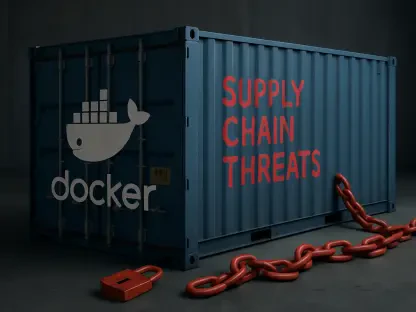I’m thrilled to sit down with Maryanne Baines, a renowned authority in cloud technology with extensive experience evaluating cloud providers, their tech stacks, and how their products serve various industries. With a deep understanding of Amazon Web Services (AWS) and its evolving landscape, Maryanne offers unique insights into the recent revival of Amazon CodeCommit, a service that has sparked significant discussion in the tech community. In this interview, we explore the journey of CodeCommit, from its initial launch to its surprising resurrection, the motivations behind AWS’s decisions, the importance of enterprise-grade features, and what this move signals about the future of cloud services.
Can you take us through the early days of Amazon CodeCommit and how it was received when it first launched?
Absolutely. CodeCommit was introduced by AWS back in 2014 at re:Invent, and it went generally available in mid-2015 as part of their “Code” family of services. At the time, it was pitched as a managed source control service, essentially a Git repository solution within the AWS ecosystem. However, the initial reaction from customers was pretty lukewarm. Developers who were accustomed to platforms like GitHub or GitLab found CodeCommit’s user interface and command-line experience clunky and underwhelming. It lacked the polish and community features of its competitors, so while it had potential for AWS-centric workflows, it didn’t win over a broad audience right out of the gate.
What do you think contributed to AWS’s decision to stop accepting new customers for CodeCommit in 2024?
I believe it came down to a mix of low adoption and a lack of investment in the service. Over the years, CodeCommit didn’t see the kind of updates or feature enhancements that could have made it competitive with other Git solutions. AWS likely looked at the usage data and saw that it wasn’t a priority for most of their customers compared to other services in their portfolio. Announcing in 2024 that they’d stop onboarding new users was probably a strategic move to focus resources elsewhere, signaling they were ready to let it fade into the background without fully sunsetting it for existing users.
Why do you think AWS ultimately reversed course and decided to bring CodeCommit back just before re:Invent 2025?
I think it was largely driven by vocal feedback from a specific segment of their customer base—enterprises with strict compliance and security needs. For these organizations, having a native Git repository solution within AWS’s ecosystem is invaluable. Features like deep integration with Identity and Access Management (IAM), Virtual Private Cloud (VPC) endpoints, and CloudTrail logging address critical concerns around control and auditability. When AWS saw customers planning migrations or resorting to cumbersome self-hosted solutions, I believe they recognized they’d underestimated the service’s niche but significant value.
How significant is it for AWS to keep code within their organizational boundaries for certain customers?
It’s incredibly important for enterprises, especially those in regulated industries like finance or healthcare. Keeping code within AWS boundaries reduces the auditable surface area, meaning there’s less risk of data exposure or compliance violations compared to using third-party platforms outside their control. Before CodeCommit matured, I’ve seen companies resort to awkward workarounds like using S3 as a Git backend just to meet compliance requirements. That’s not sustainable or efficient, so having a managed solution like CodeCommit directly addresses a real pain point for these customers.
What struck you most about AWS’s public apology to customers who had to plan migrations away from CodeCommit?
Honestly, it was refreshing to see such transparency from a company of AWS’s size. In their announcement, they explicitly apologized for the inconvenience caused to customers who had invested time and resources into migrating away from CodeCommit. That kind of accountability is rare in the tech world, especially for something that isn’t a major outage or security breach. It shows a level of humility and a willingness to admit a misstep, which isn’t something we often associate with large cloud providers. I think it helps rebuild trust with customers who might have felt sidelined by the initial deprecation decision.
Can you tell us more about the new investments AWS is making in CodeCommit as part of this revival?
Sure, AWS isn’t just bringing CodeCommit back—they’re actively enhancing it. One key update is the addition of Git Large File Storage (git-lfs) support, which allows developers to handle large files and binaries more effectively. That’s a practical improvement for teams who inevitably end up storing such assets in repositories despite best practices. They’re also expanding CodeCommit to more regions, which might not sound exciting to most users but is a big deal for AWS internally and for customers blocked by specific regional requirements. These investments signal that AWS is committed to making CodeCommit a more viable option long-term.
How does this resurrection of CodeCommit compare to AWS’s handling of other discontinued services in the past?
This move is pretty unprecedented. AWS has discontinued several services over the years—think Amazon Sumerian, a virtual reality platform, or Honeycode, a no-code tool—that didn’t gain traction and were quietly phased out. Those services often felt like experiments that didn’t resonate with a clear audience, whereas CodeCommit, despite its flaws, had a specific use case for enterprise customers. I can’t recall another instance where a major cloud provider like AWS deprecated a service and then brought it back due to customer demand. It’s a testament to the power of user feedback and advocacy within their organization.
What do you think this revival says about AWS’s broader approach to listening to customer needs?
It suggests that AWS, despite its massive scale, still has mechanisms in place to hear and act on customer feedback—at least for certain segments like enterprises. Deprecating a service and then reversing that decision shows there’s someone internally championing user needs over purely strategic or financial priorities. It’s not perfect; many smaller developers might still feel ignored if their concerns don’t align with enterprise demands. But this move indicates AWS is willing to course-correct when they realize they’ve misjudged a service’s value, which is a positive sign for their long-term relationship with customers.
What is your forecast for the future of CodeCommit and similar niche services within AWS’s portfolio?
I think CodeCommit has a solid chance of carving out a stable, if not flashy, role within AWS’s ecosystem, especially for enterprise users who prioritize security and integration over user experience. With these new investments, AWS seems poised to address past shortcomings and make it a more reliable option. As for other niche services, I expect AWS will continue to experiment, launch, and sometimes discontinue offerings as they refine their focus. But this revival sets a precedent—customer feedback can influence even a giant like AWS to rethink decisions. I foresee more services getting a second look if they serve a critical, underserved need, though AWS will likely remain selective about where they double down.









